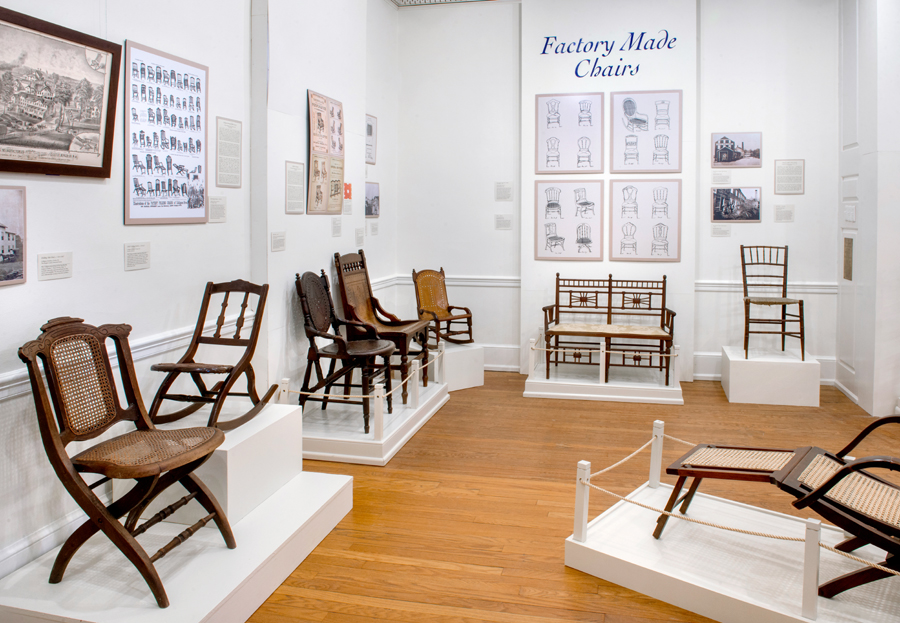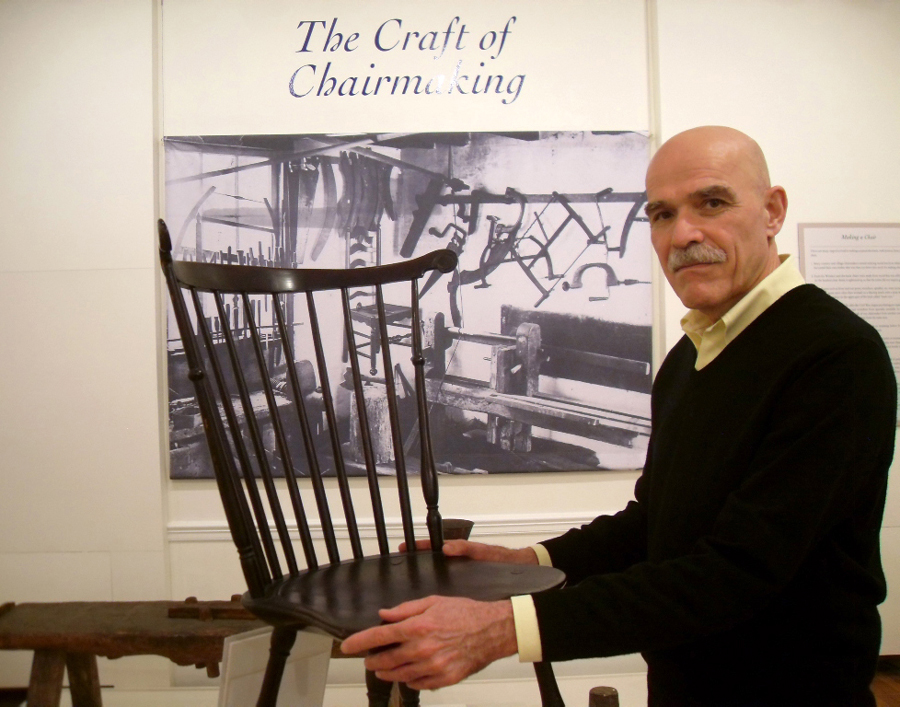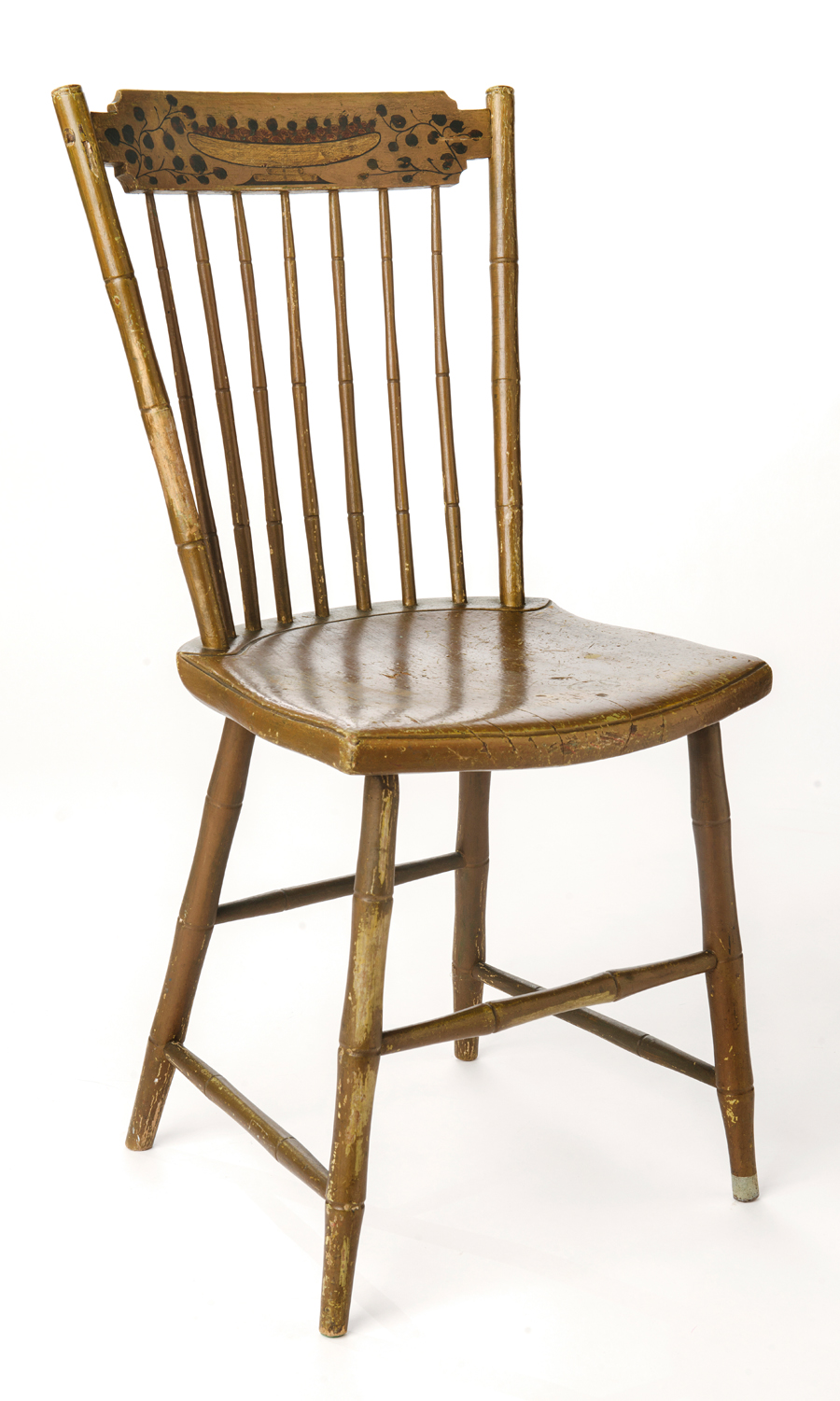“Of the Best Materials and Good Workmanship: 19th Century New Jersey Chairmaking,” on view at the Monmouth County Historical Association in Freehold, N.J., through July 9, explores craft and industry in the Garden State from 1780 to 1900. We recently spoke to Joseph W. Hammond, curator of museum collections, about the display, which draws on census records, business directories, account books and research from several sources to document the activities of shops and factories across the state. Tools and equipment donated to the MCHA by William H. MacDonald of Trenton, N.J., join works borrowed from institutions and private collectors in this nuanced presentation supplemented by portraits, photographs and ephemera.
When did you arrive at the museum?
I first came here in 1978 as director, left in 1981 for a long career as an international management consultant and returned as curator of museum collections in September 2015. In 2011, MCHA commissioned me to organize the Hartshorne Family Papers, a huge project that took several years. This is my semiretirement dream job. I’ve worked with the collections as time allowed for four decades and am an active collector of Monmouth County things.
How did “New Jersey Chairmaking” come about?
I organized the show, which first opened at the Morven Museum and Garden in Princeton, N.J. The two installations are very different. Here, the show is installed in one large gallery. We have a few less chairs, but used all of the graphics. Of 24 chairs, nine come from a very active collector of New Jersey furniture and decorative arts.
How many makers of Windsor chairs do you feature?
Most of my original research was focused on Windsor chairmakers because they were not well understood from a biographical point of view. We have eight Windsor chairs in the exhibit. Seven are branded. One is a longstanding attribution. We’ve included the earliest known New Jersey example marked by its maker, a circa 1780 chair by Ezekiah Hewes of Salem. We located a branded chair by Trenton maker Thomas Cain and show it with a newspaper advertisement for him. We also turned up Robert Leishman, the son of a New Jersey bookbinder. He first appeared as a maker of Windsor chairs in Trenton in 1793 but later surfaced in Hudson, N.Y., and Lenox, Mass.
Who stands out among makers of common chairs?
The Ware family of Cumberland County in southern New Jersey. Nineteen family members made rush bottom, slat back chairs in the Delaware Valley tradition from about 1780 to 1940 using many of the same tools, patterns and techniques. We included an impressive armchair attributed to Maskell Ware (1766–1846). We discovered a photo of the interior of a chair shop in Woodstown, Salem County, operated by Dan Ware, Maskell’s son, who was still using a pole lathe shortly before his death in 1905.
What factories do you spotlight?
The Cooper Chair factory in Bergenfield, Bergen County, made very delicate ballroom-type chairs. Their business peaked in the late 1850s. Gardner and Co. in Glen Gardner, Hunterdon County, patented the use of perforated plywood in furniture making in 1872 and produced a huge volume of seating furniture of every description. The third company is Collignon Brothers, near Closter in Bergen County. They held over 30 patents for folding seating furniture, including deck chairs for steamships.
What’s notable about the MacDonald Collection?
In the late 1920s, William H. MacDonald of Trenton took an interest in chairmaking in central New Jersey. He was able to interview many of the Nineteenth Century chairmakers, then in retirement, or their children. Among his collections, which he began donating to the MCHA in 1958, are over 600 stencils used by several Monmouth County chairmakers. These patterns are invaluable in attributing chairs to specific makers.

“New Jersey Chairmaking” looks at statewide craft and industry over two centuries. Here, a display of Nineteenth Century factory-made chairs from Bergen and Hunterdon Counties.
Your next project?
My focus is very heavily on Monmouth County decorative and fine arts by virtue of the collection that is here. Opening in September, our next major exhibit focuses on the Hartshorne family and their large estate, Portland, at the southern entrance of New York Harbor, an area called Sandy Hook. The Federal government acquired Sandy Hook from the family in 1817. It’s now part of the Gateway National Recreation Area. The Monmouth County Park System acquired another 800 acres to create Hartshorne Woods Park. The exhibit will include portraits, furniture and paintings owned by the family, many pieces of which are now in the public domain.
—Laura Beach






